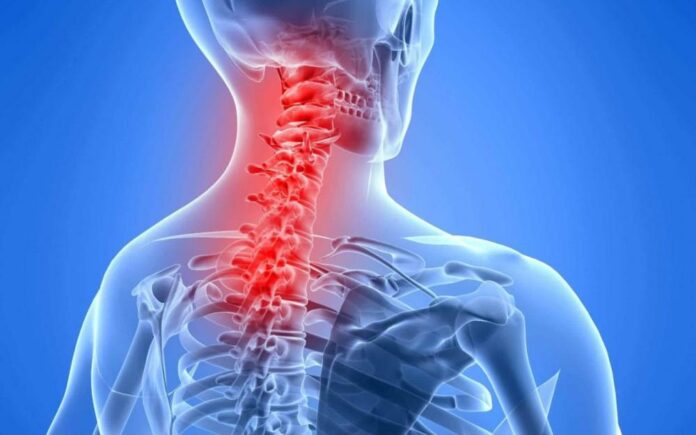Neck pain is a common health condition in many people. While it can be effectively managed in its acute stage, some neck pains, like low back pain, have a high rate of recurrence – about 50% rate as shown by the 2015 Mayo Clinic Symposium On Pain Medicine.
Knowing the sign of neck pain and reducing the risk of recurrent problems is critical for effective treatment.
Neck pain is a unique condition, so a treatment plan and individual assessment are needed for efficient and effective management.
This pain can also severely affect one’s daily life and hinder them from accomplishing even simple tasks. It can even cause anxiety for some people since the neck is very close to the brain; hence, addressing this the soonest is imperative.
An orthopedic spine specialist plays a vital role in evaluating and treating neck pain, conducting a thorough assessment, including a physical examination and diagnostic imaging, to identify the underlying cause. They then create a tailored treatment plan, which may involve conservative measures such as physical therapy and medication or more invasive options like injections or surgery if needed. Prompt and comprehensive intervention is essential to alleviate pain and associated anxiety.
In this article, we will be discussing the three different types of neck pain and how to diagnose them.
The Three Types of Neck Pain
1- Non-Specific Mechanical Neck Pain
This neck pain covers a huge majority of the neck pain issues. It is a pain felt around the neck, either on one side of the neck or on both sides.
It is not unusual for you to experience pain running down to the shoulders, around the shoulder blade, and sometimes towards the upper arm.
Sometimes, this neck pain is accompanied by headaches. The pain may vary – it may be mild or severe, dull or achy, sharp or pinching, or a mixture of all.
You don’t usually experience loss of strength, muscle weakness, pins-and-needles, or numbness. It does not also extend to the arms – only to the upper part at most.
This pain is caused by structures like the ligaments, muscles, discs, and joints. No specific trauma or incidence set the pain off.
The pain usually worsens by some movements, such as turning to check one’s blind spot when driving, carrying luggage on the shoulder, or looking down or up.
You can also feel pain when sitting, particularly if you are in a slouched position, which has been shown to aggravate the pain. You may even get neck pain by moving your head or yawning.
Specialists point out that this pain could stem from poor posture, the overuse of the neck muscle, and sometimes stress. The remedy for this pain can be as simple as correcting one’s posture, applying a hot or cold compress, and taking OTC pain medications.
If you always experience this, a chiropractor can help restore your posture and align your spine.
Chiropractor specialize in the biomechanical and structural integrity of the spine and its effect on various body parts. Their treatment focuses on reinstating normal spine function so patients can live pain–free daily lives.
2- Radicular Neck Pain
This type of neck pain is also known as cervical nerve root pain or a pinched nerve.
Though physiotherapists come across patients with this pain more, it is not as common as Non-specific mechanical pain.
It produces pain down the arm and in the neck and sometimes towards the fingers and hand.
The pain starts when a nerve is compressed as it leaves the spine, which causes pain to be referred down the nerve course as it goes down the arm.
The neck (lower cervical spine levels) is the most affected; the upper levels can also become involved.
The standard way a nerve can be compressed or pinched is by degenerative changes in the neck.
This narrows the nerve canal that leaves the spine. This occurs due to certain changes in the bony part of the vertebra known as osteophytes.
Sometimes, it is due to loss of disc height or disc bulges. Some specific postures, movements, or positions, such as slouching that reduce the canal size, can also increase the pain and spread it down the arm.
The nerve compression usually produces several neurological symptoms like pins-&-needles/tingling, numbness, and muscle weakness.
The pain is usually shooting and sharp and can be very severe at times.
Radicular neck pain can be excruciatingly painful because of a herniated disc. This can often be an early sign of degeneration.
Years of improper muscle use and athletic injuries cause the disc to bulge and eventually rupture.
Physiotherapy can help manage the pain for this type of neck pain. Still, if it doesn’t make any significant changes, another option would be an epidural injection of steroids to help reduce inflammation and pain.
Surgery to relieve the pressure on the affected nerve is the last resort to improve the patient’s quality of life.
3- Serious Neck Pathology
This neck pain is rare, and it makes up less than one percent of neck pain cases. It includes inflammatory infections or conditions, cancer/tumors, and broken bones (spinal fractures).
If you have had surgery in your neck, the doctor will advise you to go for physiotherapy sessions as part of the post-operative care. This will help you get your normal movement back and strengthen the neck muscles as well.
Physiotherapists and doctors use specific screening tests to diagnose severe potential neck pathology. If there is any cause for alarm, you will be referred for further diagnosis.
These tests include assessing neck range of motion, performing flexion and extension tests, conducting a neurological examination to test reflexes, strength, and sensation, and using imaging techniques like X-rays, CT scans, and MRI scans for visualization. Palpation is also employed to identify muscle tension or trigger points. Specialized tests, such as Spurling’s test, Tinel’s sign, Lhermitte’s sign, and assessments of swallowing and voice changes, can help pinpoint specific issues.
Additionally, vascular assessments are performed to check for signs of vascular problems. These screening tests, combined with a comprehensive medical history and physical examination, aid in identifying severe neck pathology, guiding further evaluation, and tailoring appropriate treatment plans as needed. Depending on the results, additional tests or consultations with specialists, like an orthopedic spine doctor, may be recommended for a conclusive diagnosis and optimal management.
Read Also
- The Future of Men’s Health: Why Telehealth Is Here to StayTelehealth isn’t just a pandemic trend that faded into the background. For Australian men, it has become one of the most practical, time-saving, and stress-free ways to manage everyday health — and it’s shaping the future of how we access care. Platforms like DOCTO, an Australian online doctor and specialist telehealth service, are leading the… Read more: The Future of Men’s Health: Why Telehealth Is Here to Stay
- How to Build a Simple, Clean Skincare Routine ?You don’t need a complicated skincare routine. It doesn’t have to be something that requires twenty different products and confusing steps. Your routine works well with just a few high-quality clean ingredients. The beauty industry keeps pushing more products, but your skin actually needs less. You only need a simple approach to get better results… Read more: How to Build a Simple, Clean Skincare Routine ?
- How Preventive Dental Care Supports Overall HealthHave you ever wondered how a simple dental checkup could impact your entire body? Oral health is more than just a bright smile. Studies show that poor dental habits can contribute to serious health problems. Gum disease and tooth decay are linked to heart disease, diabetes, and infections. Yet, many people overlook preventive dental care.… Read more: How Preventive Dental Care Supports Overall Health
- Seeing Clearly in a High-Tech World: A Deep Dive into Advanced Vision Care ServicesProtecting your eyesight isn’t optional—it’s essential. Modern eye care has evolved far beyond basic exams, offering advanced diagnostics, personalized treatments, and surgical innovations that keep vision sharp for life. A leading example is Intermountain Eye Center, home to specialists like Dr Fishburn Boise, where patients receive comprehensive, high-level vision care designed to preserve long-term eye… Read more: Seeing Clearly in a High-Tech World: A Deep Dive into Advanced Vision Care Services
- Why the Keto Diet Works for Some People—and Fails Dramatically for Others: An Ayurvedic Breakdown for Modern HealthcareThe keto diet has dominated weight-loss culture for years. For some people, it produces rapid fat loss, stable energy, and improved mental clarity. For others—especially those who gain weight easily—it leads to burnout, digestive distress, rebound weight gain, high cholesterol, and a metabolism that feels slower than before. Healthcare often frames this as a discipline… Read more: Why the Keto Diet Works for Some People—and Fails Dramatically for Others: An Ayurvedic Breakdown for Modern Healthcare






